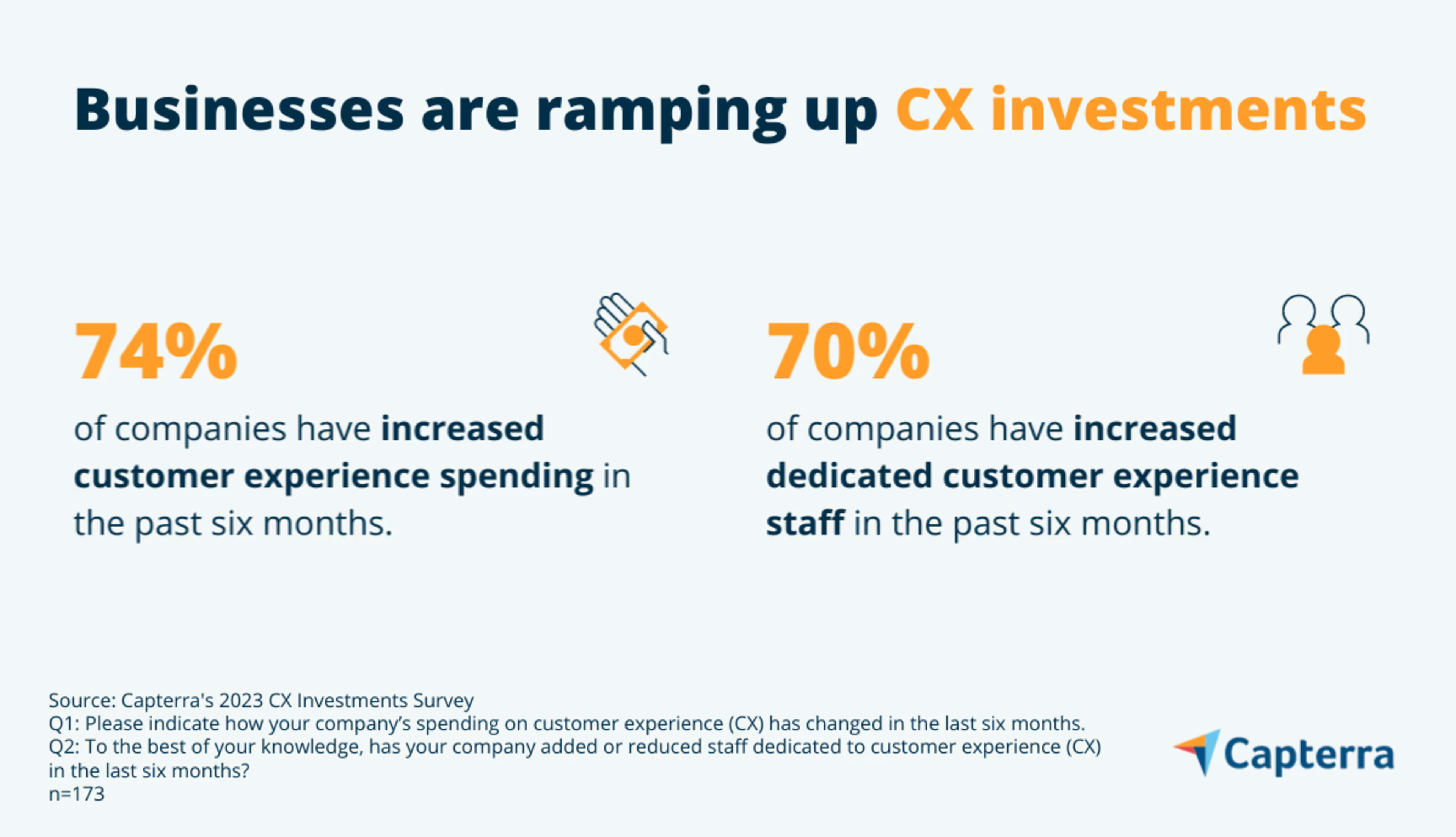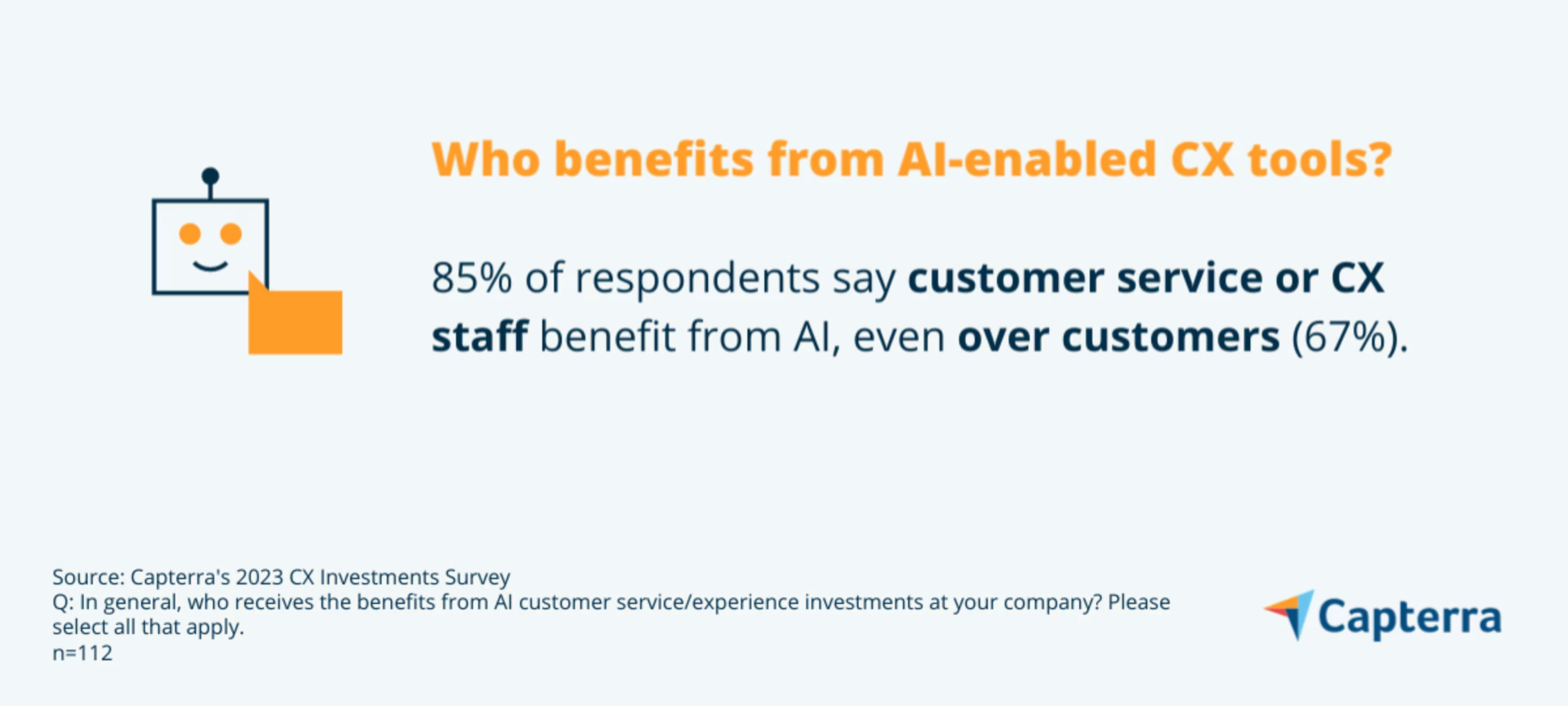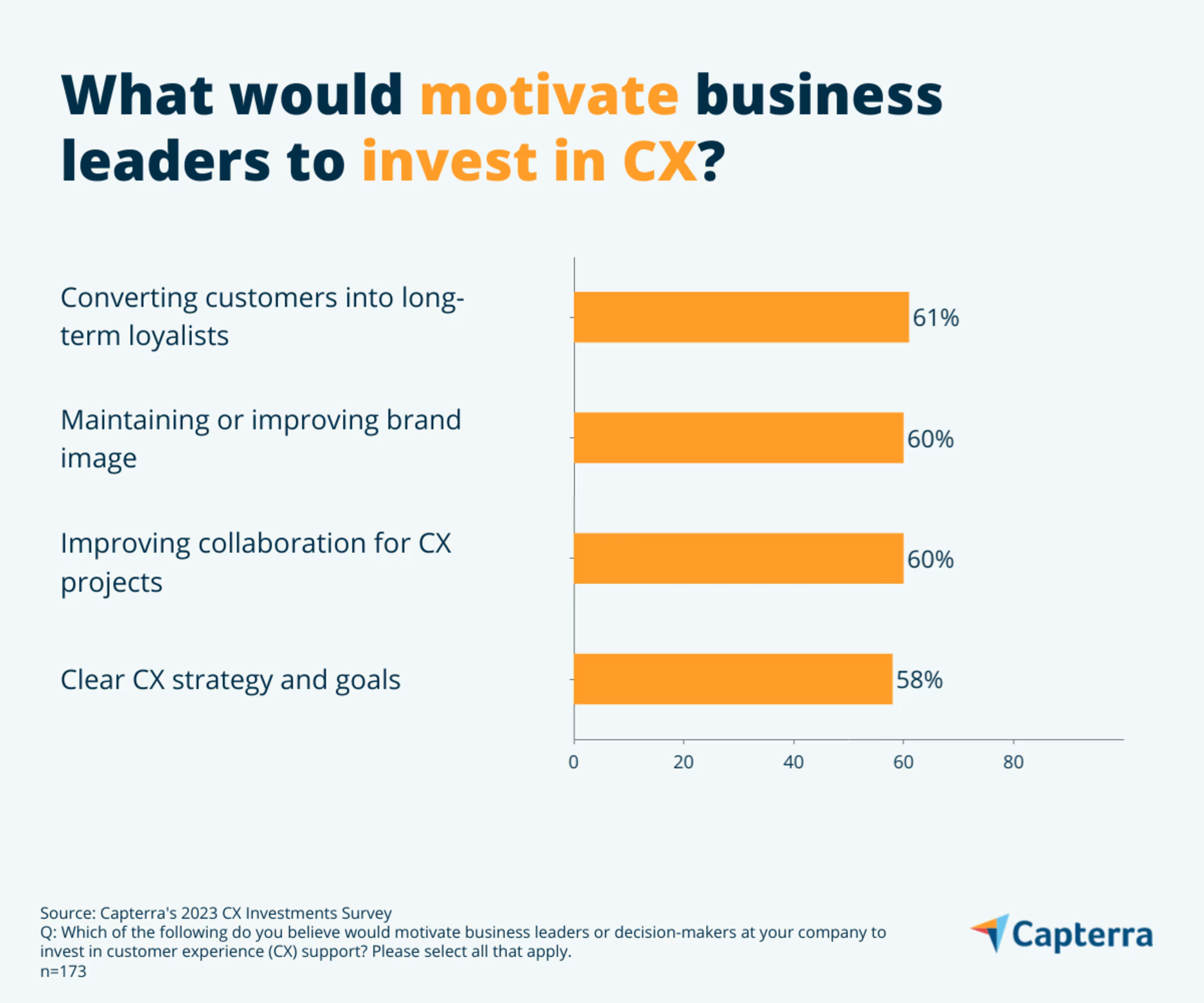CX veteran says it pays to invest in CX, but make sure you're investing in the right places.
Nobody can argue that customer experience (CX) is not important. Even in tight and turbulent economic times, companies are investing in CX. Why? It is a competitive differentiator, improves a company’s reputation, and gets customers to come back.
I had the opportunity to collaborate with Capterra on its recent CX survey to learn how companies are investing in CX. Capterra’s 2023 CX Investments Survey explores CX strategies and investment decisions at small and midsize U.S. businesses (SMBs).*
The results show not only that SMBs are increasing their CX investments, but also highlight where they are investing that money (or not investing it)—which can help you make crucial decisions about your CX investments.
A majority of companies have increased CX investments—here's why it matters
For more than 10 years, we've said that one day executives will recognize that an investment in CX will be more important than anything else. Without an experience your customers want and expect, you risk losing them to the competition. Very few companies sell something so unique that it can’t be bought elsewhere.
The differentiator is the customer experience, which is why three in four companies are now putting their money where their mouth is.

Is it enough? Majority of companies struggle to properly staff customer support
It appears that current CX staffing is not adequate to improve CX.
Even with increased staffing, 92% of respondents say they need more employee resources to improve customer experience.
If your goal is to provide great customer experiences, you need to hire and retain top-notch talent. Having a strong employee experience (EX) is an important component when recruiting CX professionals. A good EX is one of the drivers of a good CX. It’s not just money that keeps them in their jobs. It’s the experience.
This is what employees want:
To enjoy working with their team, especially their manager or supervisor.
Training in new skills. Companies that invest in their employees prove they are interested in developing the best and keeping the best.
Opportunities to grow their careers in the company.
Compensation is important, but without the three factors listed above, you’ll have employees working for a paycheck and not the company. It is only a matter of time before an employee leaves for a better paycheck, not a better job.
It may cost a little more to get the right people, but the long-term result is that people will stay, thereby reducing turnover and the expense of hiring and retraining, which typically costs more than a fair wage with the right perks.
/ Read more
Shep Hyken on the importance of your CX staff: Customer Experience Veteran Discusses the Balance Between Human Touch and Tech for Customer Service
Companies must understand their customers' needs
Our survey finds that just 22% of respondents say they completely understand the needs of their external customers. However, this is fundamental to the success of a business.
If you don’t have what they want or need, they will find another company that does. Feedback is crucial to understanding satisfaction levels, not just customer service feedback, but also for any products or services provided by the company.
A strong Voice of the Customer (VoC) program is crucial.
/ Read more
AI is one of the top technologies that companies are currently using
Capterra's survey shows that there are many technology solutions that companies are using to support their CX success:
70% use technology for their VoC program, feedback, surveying and research
65% use AI
64% have customer self-service solutions
63% have technology to help understand customer analytics
AI actually fuels all the technologies listed above. Generative AI is one of the hot topics of the day. This is going to create a stellar self-service customer experience. And the cost of implementation, even for smaller businesses, has dropped to affordable levels. Money should no longer be a barrier to entry when it comes to investing in and using technology.
AI allows for automation of common CX tools
While there are many uses for AI, when it comes to creating a better customer experience, the big uses for automation fall into three areas. Among respondents that have implemented AI-powered CX technologies at their companies, the top uses for automation include:
Machine learning (69%)
Smart assistants (65%)
Chatbots (64%)
The investments and implementation are targeting self-service tools, but that doesn’t mean companies are cutting back on employees in the CX and support departments.
Your CX team will benefit from AI-enhanced CX tools
AI is not just for the digital self-service customer experience. When asked who benefits most from CX tools infused with AI, most of our respondents said the customer service or CX staff get the most benefit:

Most think of AI supporting self-service digital solutions for customers. It allows them to access the answers they need quickly and efficiently.
But now, more companies are realizing the power of using AI-enabled CX tools to help agents efficiently get answers to their customers’ questions. Agents can be trained to properly ask—or prompt—the right question that returns the best answer for the customer, and then they can use their relationship-building skills to not just deliver the answer, but also strengthen the customer relationship.
The goal is not just to answer questions and resolve problems. It’s to create confidence in the customer’s decision to do business with the company and ensure that they continue to do so.
AI will not take away jobs
Contrary to what many people believe or are concerned about, AI will not eliminate customer service jobs. It’s not the end of live support. Of course, there will be companies that try to eliminate jobs with a self-service AI solution, but smart companies will find the balance between self-service and human-to-human support.
One of the biggest benefits of a good self-service experience is that it doesn’t eliminate agents, but frees them up to handle more important and complicated issues. So, we asked if the impact of AI has led to an increase in CX staffing, and here is what we found:
63% of companies have increased staff
28% indicate no change
Just 9% of companies have reduced staff as a result of AI
Consider that in the 1960s, Barclays Bank installed the first ATM. People thought it might eliminate the tellers working at banks. Here we are, 60 years later, and there are still tellers in almost every bank, even though there is an ATM outside the building.
How to motivate leadership to increase CX investments
The C-suite is happy to invest in CX, as long as there is proof of ROI. Some of that falls into loyalty, brand image and reputation, and projects with a definitive return.
This is what survey respondents believe motivates business leaders or decision-makers at their company to invest in CX:

I’m often asked how to approach leadership to ask for new technology, more staff, etc. The short answer, to quote Tom Cruise from the movie "Jerry McGuire," is, “Show me the money!”
Prove that you will deliver what they want (ROI), and you’ll get what you want.
Everybody is happy when customer support becomes a revenue generator
Each year I make my annual CX and customer service predictions. I’ve noticed a trend in which leadership is starting to recognize that customer support is not a cost, but a viable revenue generator.
The combination of technology and a human-to-human agent experience is increasing retention, increasing customer spending, and building brand reputation. While it’s the job of the marketing and sales teams to create awareness and bring in customers, customer support and CX get the customers to come back.
And while CX is every touchpoint the customer has while doing business with you, customer support is what happens after the sale. It confirms the customer made the right decision to do business with the company based on how they handle questions, problems and complaints.
All of these, when managed well, give a company a competitive edge, and it gives the customer a reason to come back. When they do come back, they typically spend more. They may even become loyal. And that’s the reason companies should pay close attention to how much and where they are investing in CX.
For more of Shep’s insights and writing for Capterra, check out the following pieces:

